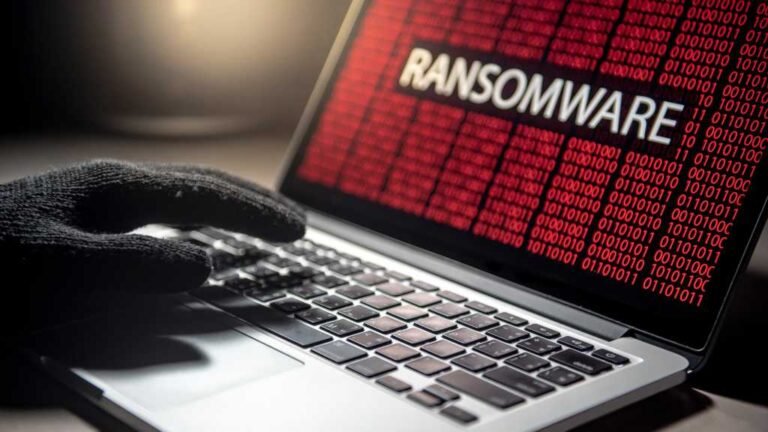Fast Facts
- Charon represents a new generation of ransomware, employing stealth and APT-level techniques for persistent, targeted attacks.
- Unlike traditional ransomware, Charon quietly infiltrates systems, hijacks trusted applications, disables security tools, and destroys backups, leaving minimal recovery options.
- The ransomware’s use of personalized ransom notes indicates highly targeted campaigns aimed at specific organizations, not broad attacks.
- Charon’s adoption of advanced tactics heightens the threat level across critical sectors like healthcare, aviation, BFSI, and public services, increasing psychological and operational pressure on victims.
The Core Issue
The story describes a new type of ransomware called Charon, which represents an advanced threat in the landscape of cyberattacks. Unlike traditional ransomware that simply encrypts files and demands payment, Charon employs sophisticated, state-sponsored APT (Advanced Persistent Threat) techniques to infiltrate organizations stealthily. It quietly embeds itself into the victim’s systems, uses trusted applications to hide its activity, disables security defenses, and deliberately destroys backups, making recovery nearly impossible. The attack is highly targeted, as evidenced by personalized ransom notes that include the victim organization’s name, indicating that the attackers carefully select and customize their victims rather than carrying out random strikes.
This alarming shift in cybercriminal tactics is raising the stakes for sectors like aviation, healthcare, banking, and public services, which are increasingly vulnerable to these highly technical and targeted assaults. The report highlighting these details was provided by experts such as Jaspreet Bindra and Amit Jaju, who emphasize that Charon’s deployment of advanced techniques signals a new era in ransomware threats, where attackers adopt methods once reserved for nation-state espionage campaigns, leading to heightened risks and psychological pressure on targeted organizations.
Security Implications
Charon exemplifies a new wave of ransomware that incorporates advanced, state-sponsored APT tactics, making it far more insidious and destructive than traditional forms. Unlike standard ransomware, Charon operates stealthily, exploiting trusted applications to evade detection, disabling security defenses, and deliberately destroying backups before encrypting data, which leaves organizations with limited recovery options. Its targeted approach, exemplified by personalized ransom notes, signals a shift toward highly customized and psychologically impactful attacks aimed at critical sectors such as healthcare, aviation, banking, and public services. The integration of APT-level techniques into ransomware not only heightens the sophistication of these threats but also significantly amplifies their potential to cause widespread disruption, financial loss, and strategic damage to organizations and national infrastructure.
Possible Action Plan
Ensuring rapid response to emerging ransomware threats such as the new ‘Charon’ variant that leverages DLL sideloading to infiltrate critical infrastructure is crucial for limiting damage, restoring security, and maintaining operational continuity. Delays in remediation can lead to extensive data loss, costly downtime, and compromised national security.
Mitigation Strategies
- System Monitoring: Continuously monitor systems for unusual activity or unauthorized DLL loads.
- Software Patching: Regularly update operating systems and all software to fix known vulnerabilities.
- Access Controls: Implement strict access controls, including least privilege principles and multi-factor authentication.
- Application Whitelisting: Use application whitelisting to prevent unauthorized DLLs from loading.
- Threat Intelligence: Stay informed about the latest ransomware variants and attack techniques.
- User Education: Train staff to recognize phishing attempts and avoid actions that could introduce malware.
- Backup Procedures: Maintain and frequently test secure backups to enable swift recovery without paying ransom.
- Security Controls: Deploy and tune intrusion detection systems, endpoint protection, and firewalls.
- Incident Response Plan: Develop, regularly update, and rehearse an incident response plan tailored to ransomware scenarios.
Remediation Steps
- Identify Infection: Conduct thorough scans to locate and confirm the presence of malware.
- Isolate Systems: Immediately disconnect affected systems from networks to prevent spread.
- Remove Malware: Use specialized tools to delete malicious files and DLLs.
- Analyze Breach: Investigate the attack vector to understand how the breach occurred.
- Restore Operations: Reinstall clean systems from verified backups to resume critical functions.
- Update Security Measures: Strengthen defenses based on lessons learned from the incident.
- Report Incident: Notify relevant authorities and stakeholders according to legal and policy requirements.
Taking prompt, comprehensive action tailored to the specifics of the Charon ransomware campaign is essential for defending critical infrastructure against evolving cyber threats.
Continue Your Cyber Journey
Discover cutting-edge developments in Emerging Tech and industry Insights.
Understand foundational security frameworks via NIST CSF on Wikipedia.
Disclaimer: The information provided may not always be accurate or up to date. Please do your own research, as the cybersecurity landscape evolves rapidly. Intended for secondary references purposes only.
Cyberattacks-V1

